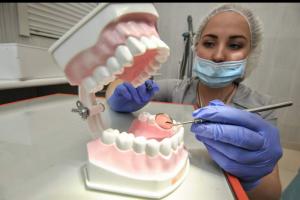Let's talk about a very interesting culture. Growing onions - leeks, onions, on the feather - is quite a popular activity among lovers of summer holidays. We offer you to understand the nuances of planting and caring for this crop. The fact is that, having taken up cultivation for the first time, not everyone achieves good yields, but all because you need to know some secrets, which we want to tell you about. You do not have your own site? No problem! Make a mini-garden and plant onions on the windowsill! Growing it is a common thing for many apartment owners.
Onion popularity
Leek is also called pearl onion. This is an ancient plant distributed around the world. Leek is currently in third place in popularity among related cultures after onions and garlic. Anyway, it's hard to imagine how you can do without it. Many families love him. It makes a wonderful soup.
Leek seeds
Growing onions from seeds is a simple process. You need to start with their proper preparation. Their germination is maintained for three years. So, let's start by etching the seeds (this is disinfection). To do this, they must be placed in water before planting: first in the hot (45 degrees), and then in the cold.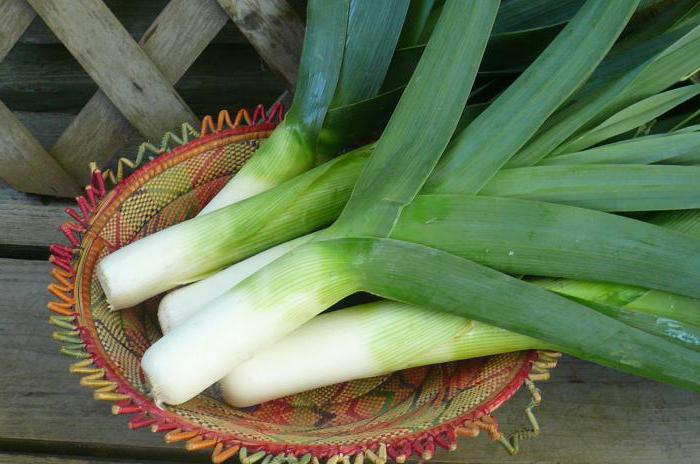
If you want to get quick shoots, then the seeds are better to germinate. And for this, lay them on a wet cloth and leave them in a warm place. In a couple of days it will be possible to dry them a little, and then to sow. This should be done at the end of February.
Processing should be carried out if you are going to sow your own seeds. Purchased, and especially imported, as a rule, are already disinfected.
Leek: growing seedlings
In the southern regions, it is quite possible to grow onions, sowing them directly into the ground in the second half of May. And in the central and northern regions of Russia, culture is planted in the form of seedlings. This is due to the growing season of the plant.
To get good seedlings, the following sowing dates are recommended:
- In February, plant the seeds in boxes on the window.
- In mid-April - in a glazed greenhouse or under the film in the garden.
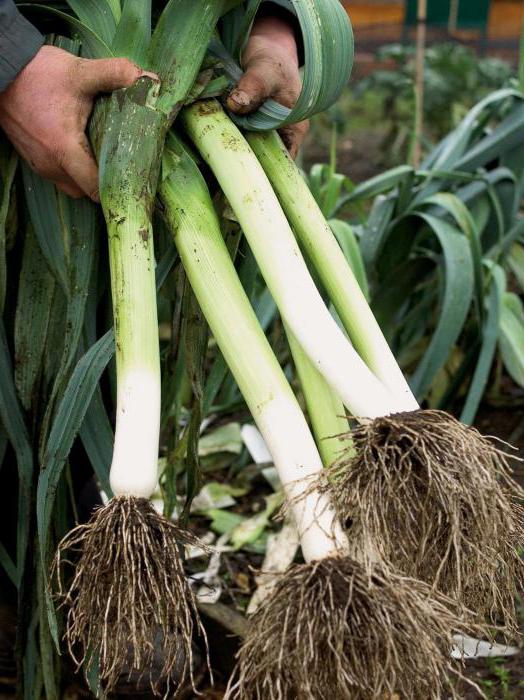
For leek, the length of daylight is 10-12 hours. And therefore, if you sow seeds in February, for seedlings you will need additional highlighting.
We begin to grow onions in the winter by sowing the seeds in small boxes with moist soil. Furrows need to be done at a distance of five centimeters. Planting depth - 1.5-2 cm. Pots are covered with foil and placed in a warm, well-lit place (+ 25 degrees). As soon as the first shoots appear, the film is immediately removed. The temperature in the room should be gradually reduced to fifteen degrees during the day and to ten at night. At this temperature, the crops are kept for seven days. Then gradually change the schedule. During the day, the temperature should be no more than twenty degrees, and at night 10-14 degrees. Further, this mode is maintained during the entire time of growing seedlings.
Compliance with the temperature schedule is a very important condition for the future harvest. Too warm temperatures for seedlings will lead to the early formation of a flower arrow, which should appear in the second year of life, and not in the first. As you can see, you have to work hard to get leeks. Growing seedlings is a troublesome business.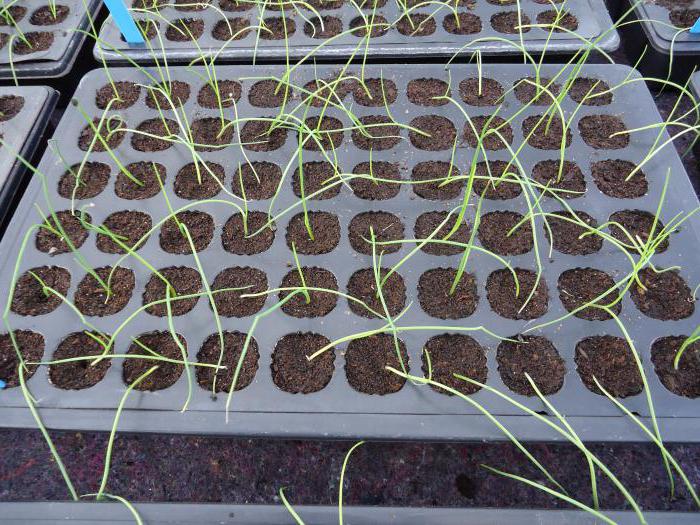
Exactly a month later, thick seedlings can be thinned out so that the distance between them is a couple of centimeters.Seedlings dive into pots, the diameter of which can be up to four centimeters.
So we sowed the onion. The methods of growing it may be different. Good seedlings are obtained when using peat pots and tablets, because in this case you do not need to dive plants.
Seedlings can be watered with compost tea. Growing onions should be accompanied by regular feeding. It is advisable every two weeks during the entire period of growth.
What else should you pay attention to when engaging in activities such as growing onions at home? We advise you to trim his leaves so that their length does not exceed 9-10 centimeters. This should be done every couple of weeks, which will contribute to better root growth and thickening of the stems.
Before planting onions in open ground, seedlings need to begin to harden. To do this, the pots are taken out onto the street, plants are gradually getting used not to home conditions, but to fresh air.
It should be noted that seedlings grow quite slowly. After 6-8 weeks after planting, seedlings can be planted in the soil if the stem in diameter has reached 5-8 millimeters.
How to plant seedlings?
Growing onions will yield good yields on light fertile loamy soils with a neutral environment.
In the fall, preparing the site for planting, you can make fertilizers or compost. And in the spring, beds can be sprinkled with humus. It is good if potatoes, tomatoes, cucumbers, cabbage or legumes grew on the ground in front of onions. Seedlings are planted in open ground in May.
Before planting, it is recommended to slightly trim the leaves and roots (the roots can be dampened in a mash of mullein and clay). So the plants take root better.
For planting, it is necessary to prepare the holes. Their depth should be no more than twelve centimeters. Compost or manure must be placed at the bottom. One planted plant in each well. Next, the roots are sprinkled with earth, watered and finally added.
The technology for growing onions and planting is as follows:
- Double row - the distance between the seedlings is about fifteen or twenty centimeters with a row spacing of thirty centimeters.
- Multi-row - the distance between plants is ten to fifteen centimeters, with row spacing up to thirty centimeters.
Growing onions better occurs in narrow rows. If you have large distances between the rows, then you can sow carrots. These plants combine wonderfully. Another onion is friends with strawberries, celery and beets. These plants can be planted in onions. The cultivation and care of these crops can be combined because they are friendly to each other. So, they will not interfere with one another.
How to care for onions?
Home-grown onion involves careful maintenance of the crop. This is loosening the soil, and weeding weeds, and hilling, watering and top dressing. Connoisseurs are advised to use mulching, this will facilitate your work and create comfortable conditions for growing onions.
When the stems of the plants have reached the diameter of a ballpoint pen, add soil to the wells. Then, every couple of weeks, you will need to spud the beds. This is necessary in order to get a longer white stem. In general, at least four such procedures must be performed during the season. It is better to do this before watering.
It should be noted that onions are a demanding culture. He loves good soil and watering, which should be regular and plentiful. Top dressing must also be present. For onions, mullein and bird droppings are considered good fertilizers. They are used in the form of solutions.
The most valuable part of the leek is the white stem, which is also called the stem. If you properly care for it, then the stem can reach fifty centimeters in length, and in width up to four centimeters.
Leek is a fairly cold-resistant crop. It can withstand frosts of up to seven degrees.In regions with a mild climate, plants can overwinter under the snow in the open ground. A rainy and cool summer can lead to the formation of a thin and short stem.
Growing onions in greenhouses
There are late types of onions that are cold resistant. However, they cannot complete their growth due to the long growing season. Such varieties are grown under a film. They also cultivate onions in greenhouses in winter.
Plants grown in the soil can be transplanted into boxes and transferred to a warm room so that they grow further there. This must be done in the autumn, before the onset of frost.
Winter onions can be arranged. How business is a great idea. In cold weather, its cost increases significantly, and so does demand. In winter, I want something summer and fresh. Moreover, onions are known for their beneficial properties and antiviral effect.
Greenhouse technology
Growing onions in a greenhouse is not a very difficult matter. Great difficulties should not arise. It is better to sow those varieties that are suitable for these purposes. If planting occurs before winter, then you can cover the plants with a film. But you can organize the cultivation of onions, as a business, in a greenhouse. The fact is that in greenhouse conditions, the crop can be obtained much earlier.
First you need to dig the beds and make fertilizers. Superphosphate and potassium chloride are suitable. It is advisable to make a landing or transplant before mid-October. After all, plants still need to have time to take root.
Landing should be done at a distance of one and a half or two centimeters. As soon as the cold comes, the plants are covered with peat, manure or straw.
By the end of March or at the very beginning of April, all insulation materials must be removed and only the film left. Plants need to be watered and fertilized. Nitrogen fertilizing should be used twice during the spring.
In early May, greens will appear.
Growing onions in a greenhouse with heating is different. The boxes are first filled with peat and earth from the garden. When they want to achieve increased yield, the onions are heated for a day at a temperature of forty degrees. Next, the neck of the plant is cut. Care will be exactly the same as in other cases. This is watering and top dressing. You will receive the crop in thirty days. But for this you will have to maintain the desired temperature. In the daytime - up to twenty degrees, and at night - up to fifteen.
Winter Growing Recommendations
If you want to get high and high-quality greens, you will need additional lighting up to twelve hours a day. You can not buy small onions for planting, this will affect the harvest.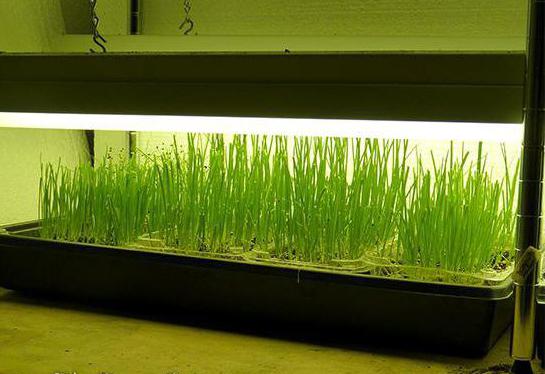
If you still decide to grow onions specifically for profit, then you should remember that there are days when it is acquired especially briskly. For example, before the New Year, March 8, February 23, Easter. Therefore, growing plants makes sense to fit precisely at this time.
Basement cultivation
The option of growing onions in the basement may become quite acceptable. Shelving can be installed there. The advantage of this option will be the plus temperature in the room. But the disadvantages include the need for artificial lighting equipment.
Growing onions at home on a windowsill
Summer red passes very quickly, and now on the threshold is autumn, and after it is winter. It’s good when we prepared in advance for them to come, having dried and frozen food. But in the cold I really want something fresh and tasty, but at the same time useful. Of course, in the winter, supermarkets are full of greens and fruits, but their prices are high. Therefore, you can try to grow onions at home on the window. Harvesting, you will get a lot of pleasure and feel pride in yourself. You can place the onion on the windowsill. Growing plants is possible at home. But there are some nuances.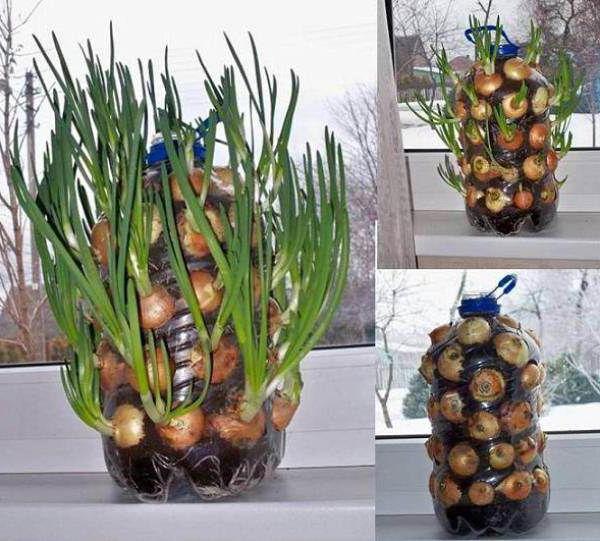
The stores have a huge assortment of potted products and boxes for indoor plants.However, a wooden or clay pot is the best choice. If you have not found such, then you can use plastic containers. It is better to cover the bottom with oilcloth, making small holes in it for the outflow of water.
Seeds are sown in flower pots at the end of February. It is better to soak them beforehand. Pots are filled with soil by two-thirds, then seeds are put, on top of them they are covered with earth for a couple of centimeters. Further, all this is closed with a film or plastic bag. Every few days, the film needs to be removed, watered, and then closed again. As soon as the first loops appear, the packets are removed. And the pots are placed on the windowsill. If the street has a positive temperature, then sometimes it can be taken out to the veranda or balcony. During this period, plants are carefully watered and protected from direct sunlight.
However, natural lighting may not be enough, because it is no secret that in the autumn-winter time the daylight hours are very short and the seedlings will need additional lighting. Alternatively, it can be artificial lighting with fluorescent fluorescent lamps. Keep in mind that a home garden is best placed on the southern windows.
And remember to observe the temperature regime. All plants are very moody regarding temperature changes. If you want to ventilate the room, it is better to remove the sowing boxes from the draft. Or cover them with something.
If the air in the room where the onion is dry, then it is better to spray the plants. Seedlings are watered only with defended water at room temperature when the topsoil has dried up. Excess moisture should go into the pan. So that she does not stagnate there, it makes sense to fill it with sand or gravel.
Do not overmoisten the soil, as the roots of plants can begin to rot, which will lead to the death of onions.
Is leek susceptible to disease?
Unfortunately, onions are prone to disease. Yes, there are pests that affect plants. For example, onion fly, Fusarium, black mold, rust, downy mildew. In general, you need eye to eye. Just keep track of the plants.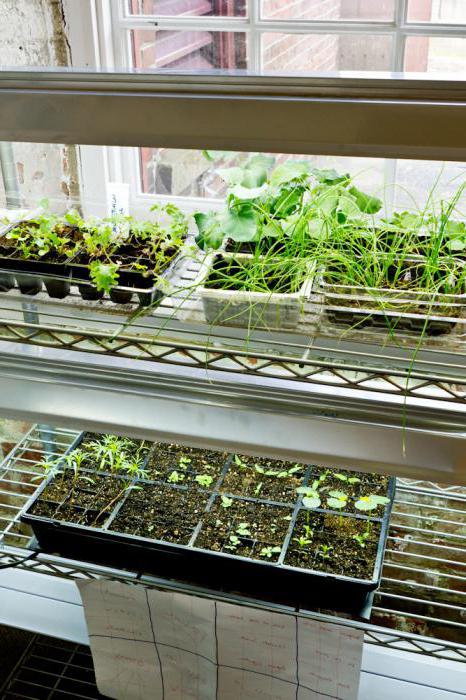
- Mosaic. This is a viral onion lesion. And the aphid carries it. A sign of this disease is the appearance of longitudinal yellow spots. Sick seedlings stop growing. You can fight this disease only by destroying all the affected onions. There are no other options. As a prevention, you can only deal with ticks and aphids. Still experts advise using seeds that have lain for a couple of years. The fact is that during this time the virus almost dies.
- Powdery mildew (false) are white spots that spread rapidly through plants. Onions affected by this disease are inedible. Sick plants need to be removed. It makes sense to process the beds with phytosporin or copper chloride. It is believed that the best prevention of this disease is proper farming.
- Rust leaves. It manifests itself in the appearance of yellow pads on plants. These are spores of mushrooms. Affected leaves begin to dry, and then turn black. Plants with such a disease need to be urgently torn out of the garden and destroyed to prevent the spread of fungi to healthy onions.
- Of the pests, the onion fly does the most damage. She devours leaf greens and leaves large gaps. Even the larvae of these flies can harm the onion. They greatly spoil its underground part. To deter pests, it is advised to sow carrots in the aisles. The fly does not like its smell. Connoisseurs recommend watering the onion in such cases with a special solution: a glass of layers is poured into ten liters of water. The resulting mixture is watered beds under the root. But the soil itself is advised to sprinkle with carrot seeds (ground) or pepper per teaspoon per square meter. You can use wood ash.It cannot be said that all these measures give a full guarantee of the disappearance of pests, but they will help to preserve part of the crop and prevent its complete death.
Secrets of experienced gardeners
Agricultural technology of onions is not particularly difficult. However, experienced specialists in this matter have their secrets. They advise paying great attention to plants at the initial stage, immediately after planting. In the future, care will not be so troublesome.
The basic rule is to carefully monitor the weeds in the garden. They must be pulled out. Watering and removing unnecessary grass should be the main principles of care.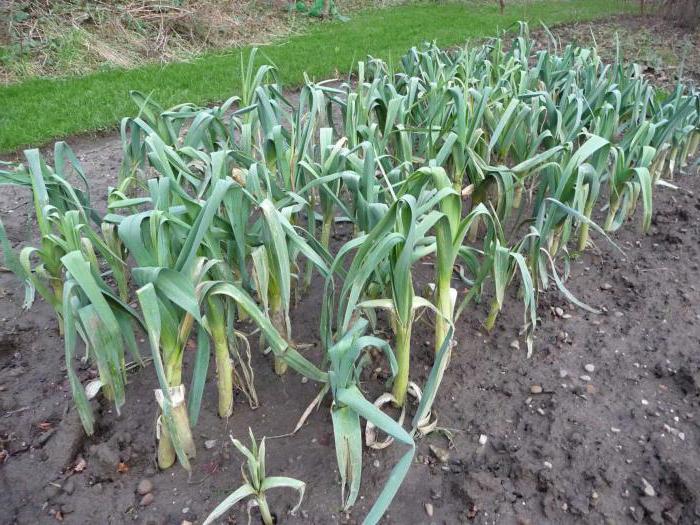
The soil should always be moist. It is bad when it dries up, but waterlogging and overflow cannot be allowed.
During the season, you should spud the beds three to four times. This will give a chance to get a white long leg. After each hilling, the earth is mulched, for example, with straw or dry manure, dry grass.
Leek has one interesting feature. It does not stop growing even when it was dug up and put in the basement for the winter for storage. And therefore it is advised to feed him often. For the first time this can be done as soon as the plant reaches twenty centimeters and it has five leaves.
The use of such a solution is allowed: put a liter of mullein on ten liters of water. The resulting composition is watered between the rows. Plants can not be treated with a solution. He can burn greens. This fertilizer is suitable for poor soil. If you have well treated the soil before planting, then you can do with watering from tinctures of herbs, such as nettles.
Remember that leeks are never fertilized with fertilizing with a large amount of nitrogen, this leads to decay of plants even when stored in cellars.
For plants, an irrigation schedule is very important. Onions need good watering during the period of intensive growth of the green part in June, as well as during the formation of the onion part in July. The soil should be moist, but not very wet or dry. Any deviation from the norm will lead to undesirable consequences.
Harvest onions in late autumn. However, he is able to winter in the open ground, of course, if the winter is not very cold. In general, onions are a cold-resistant plant. In the middle lane it can be covered with needles or straw, peat. And in the spring it begins to grow rapidly, although the rest of the plants are just beginning to plant.
Instead of an afterword
Leek is often found in gardens and summer cottages. This culture was brought to Russia in the middle of the last century. The popularity of this plant is huge. This is probably due primarily to useful properties. Onions can be eaten fresh, salted, frozen, pickled. In fact, this is a universal product. Valuable in it is even the stem. It is eaten all summer and autumn. The younger the shoot, the tastier and juicier it is. And young leaves are used for salads and soups. They have a lot of potassium, which activates the metabolic processes in the body.
If you decide to start growing this wonderful plant at home, we hope that our article will be useful to you. In fact, the process itself is not very complicated, and the plant cannot be called moody. Try it and see for yourself.








